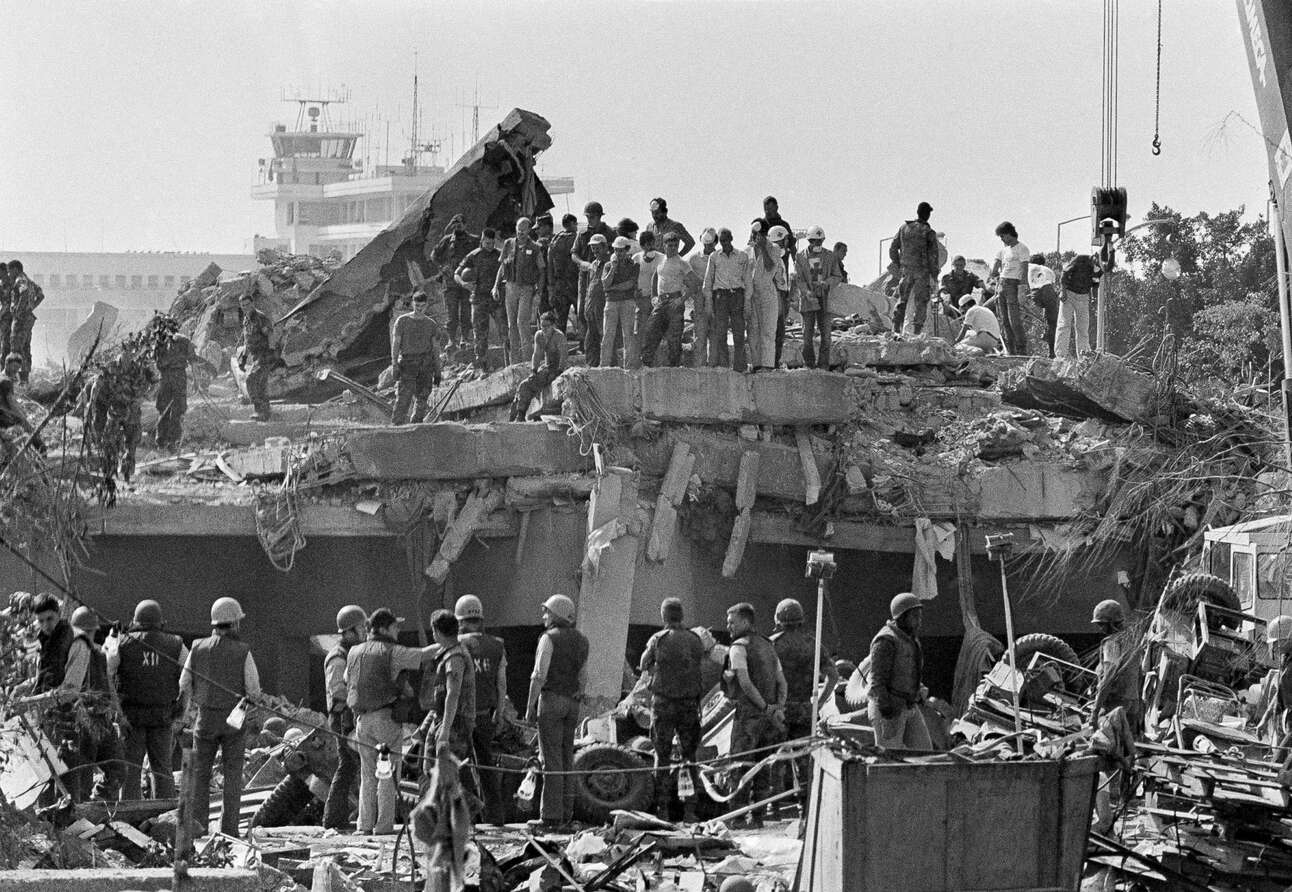Did someone forward you this? Subscribe here free!

We the 66 is our premium newsletter featuring on-the-ground reporting, deep dives, and interviews. It’s the best content Roca has to offer and subscriptions fund the work.
We’re running another giveaway this month: Sign up for a free trial and you will be automatically entered to win a free year of premium. We’ll announce the winner in four weeks!

At 6:20 AM on October 23, 1983, a truck drove into a barracks housing American Marines on a peacekeeping mission in Beirut, Lebanon’s capital. With the equivalent of 12,000 pounds of TNT, the explosion lifted the building off the ground, before it came crashing back to Earth, killing 241 Americans inside.
Minutes later, another explosive-laden truck accelerated toward a Beirut barracks housing French troops. The troops opened fire, killing the driver, but the vehicle rolled forward. It came to a stop 15 yards from the building, sat for several seconds, and then exploded, bringing down the building and killing 58 French soldiers.
The group responsible didn’t yet have a name, but that would soon change.

Aftermath of the Marine barracks bombing, Beirut 1982

Origins
In 1946, France withdrew from Lebanon. Before doing so, it established a system where the country’s three largest groups would share power: The Christians, then the largest group, would get the presidency; the Sunni Muslims, then the next-largest, would get the prime ministership; and the Shia Muslims, the third-largest, would get the parliamentary speakership.
For Lebanon’s initial decades, the Christians and the Sunnis controlled most of the political and economic power. The Shia – who mainly lived in underdeveloped rural areas – were Lebanon’s poorest and most marginalized group. By the 1970s, they were fed up.
In 1975, civil war erupted between the country’s various factions. Amid this, Shia Muslims began to organize themselves into various political and military groups. Shiite Iranians who wanted to overthrow Iran’s pro-West king, the Shah, joined them.
In 1979, those Iranian revolutionaries returned to Iran and, under the guidance of the Islamic fundamentalist preacher Ayatollah Khomeini, overthrew the Shah. They proceeded to turn Iran into a Shia Muslim state and export their revolution abroad. The group tasked with doing so – the Islamic Revolutionary Guard Corps – dispatched members to Lebanon with cash and weapons.
These Iranians cultivated hardline Lebanese Shia to fight a guerilla war and install an Islamic state, including by smashing liquor stores and shutting down “un-Islamic” places, like cinemas. They also helped them organize politically and gain popular support, including by running charities that helped poor Lebanese Shias and defending them from Christian and Sunni militias.
These Shia militiamen displaced more moderate alternatives and gained dominance in Lebanon’s three primarily Shia areas: The Bekaa Valley, in eastern Lebanon near Syria; southern Beirut; and southern Lebanon, near Israel.
Southern Lebanon was already host to a different militant group: The Palestinian Liberation Organization (PLO). The PLO had been conducting attacks on Israel from Jordan, but Jordan’s government evicted the group. It came to southern Lebanon and began a stream of attacks on the Israelis over the border. Israel would respond with raids, with the Lebanese natives caught in the middle.
In 1982, as both Lebanon’s civil war and PLO attacks on Israel continued, Israel invaded Lebanon. Working alongside allied Lebanese militias, Israel advanced through southern Lebanon up to Beirut, where it sought to install a friendly government.
The invasion and an ensuing massacre poured lighter fluid on Hezbollah’s rise.
The rest of this report is available for paid subscribers. They get weekly premium deep dives and on-the-ground reporting – and fund Roca and our mission. Subscribe to get full access here. Once you do, you can find all our full articles here.
A reminder: If you sign up for a free trial today, you’ll be automatically entered to win a free year of Roca Premium! You can do it here.




